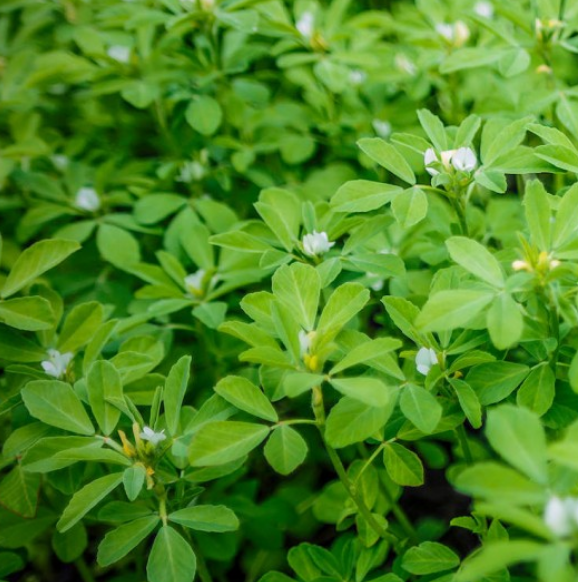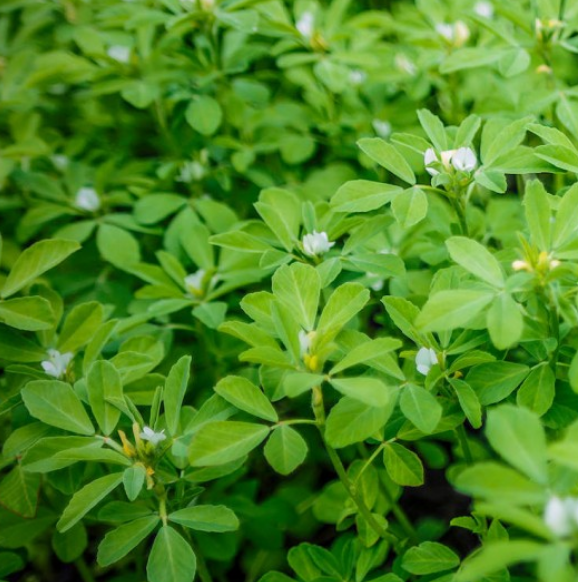Fenugreek
Fenugreek
Packet Size: 75 seeds
Couldn't load pickup availability
Fenugreek (Trigonella foenum-graecum, also known as Methi) is an easy-to-grow annual herb. It thrives in well-drained soil and prefers full sunlight to develop its best flavour and growth. The plant reaches about 30-60 cm in height and features light green, trifoliate leaves with small white to yellow flowers that appear in summer. Fenugreek germinates quickly from seed and is often grown for its leafy greens. Both the leaves and seeds are edible, making it a versatile addition to herb and vegetable gardens.
🌱 Seasonal Growing Guide
SPRING
- Sow directly into a sunny, warm, well-drained spot – fenugreek dislikes being transplanted.
- Prefers alkaline soil.
- Space rows about 20 cm apart.
- Plants typically grow 30–60 cm tall, with ideal conditions they can reach 75cm
SUMMER
- Begin harvesting young leaves as soon as plants are well-established.
- Use fresh in cooking or dry for later use.
LATE SUMMER & AUTUMN
- Allow plants to flower and set seed.
- Collect and dry seeds once pods mature – great for spice use
WINTER
- Remove old plants and prepare the soil for spring planting.
📌USES
CULINARY
- Fenugreek is a staple ingredient in Indian cuisine, prized for its distinctive flavour and aroma. The seeds are commonly used in the preparation of pickles, curry powders, and spice pastes.
- Fenugreek frequently features in chutneys, stews, spice rubs, and flatbreads such as parathas.
- It is also used in sweets, and thanks to its sweet yet slightly bitter aroma, Fenugreek is sometimes used as a natural substitute for maple syrup or vanilla flavourings.
HISTORICAL
- Fenugreek is believed to have originated in the Near East and was cultivated as early as ancient Mesopotamian times, making it one of the oldest known medicinal plants.
- In Ancient Egypt, fenugreek was prized for its versatility. It was used in food preparation, incense, and even in the embalming and mummification processes due to its aromatic and preservative properties.
- During the Roman era, fenugreek was cultivated as a fodder crop and also used to flavour wine, highlighting its dual role in agriculture and cuisine.
MEDICINAL
- In India, fenugreek has been a cornerstone of Ayurvedic medicine for thousands of years
- Traditionally, it has been used across many cultures to support a variety of health concerns, including:
Digestive ailments – such as indigestion, bloating, and loss of appetite
Respiratory issues – including coughs, bronchitis, and congestion
Skin conditions – like inflammation, wounds, and eczema
- Modern research is exploring its potential health benefits, including:
Blood sugar regulation Support for testosterone levels Enhancement of milk production in nursing mothers
Please note: we do not promote the medicinal use of plants – guidance and information should be sought elsewhere. Always seek professional medical advice and consult trusted sources for health-related guidance.

Collapsible content
Sowing
- Mar
- Apr
- May
Harvesting / Flowering
- Jun
- Jul
- Aug
- Sep
- Oct

